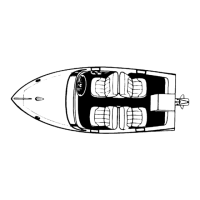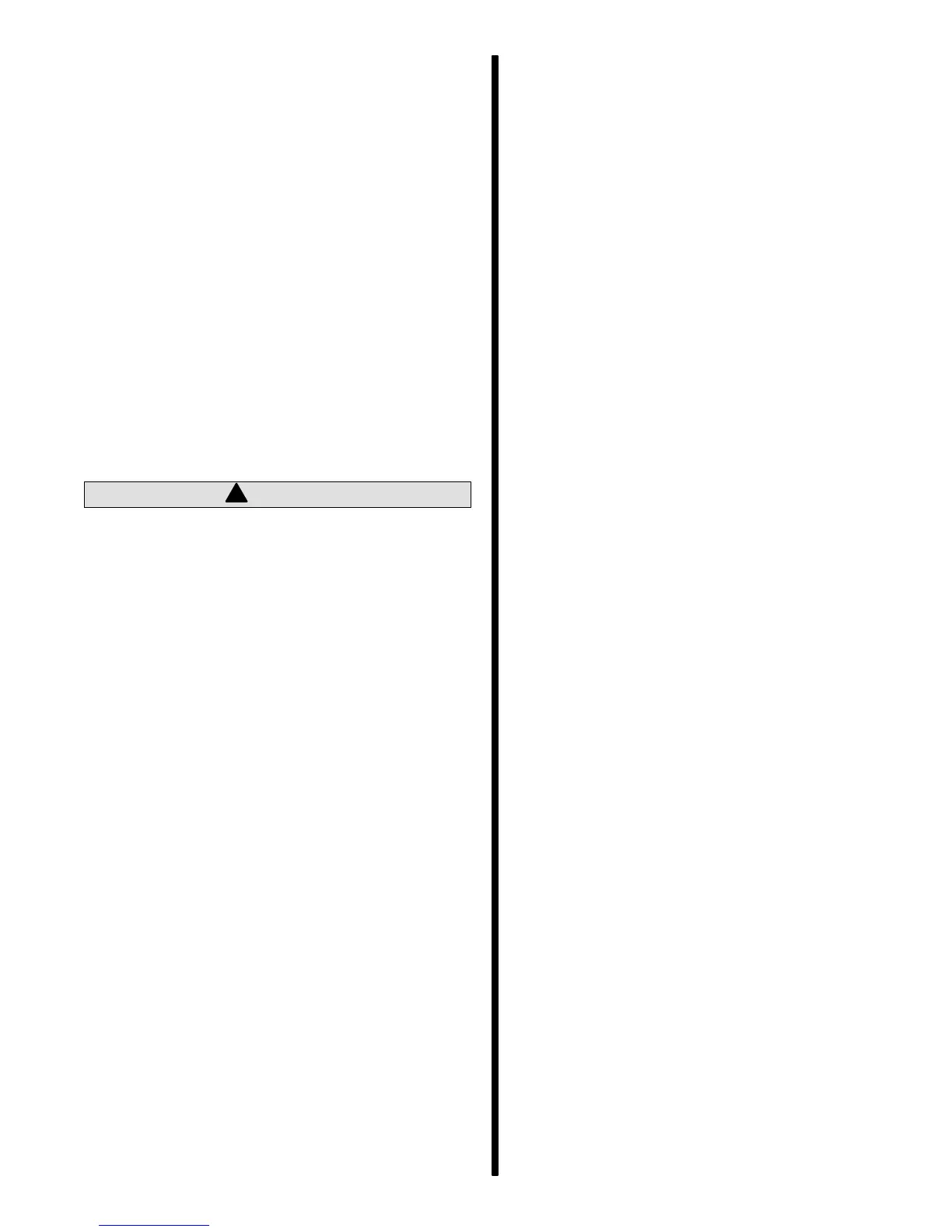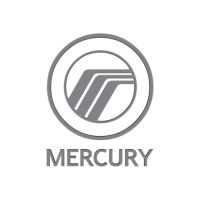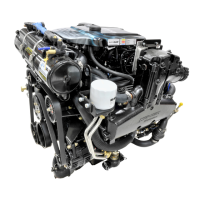ENGINES - 3A-1790-823225--1 1096
Connecting rods are made of forged steel and are
connected to the crankshaft through insert type bear-
ings.
Camshaft and Drive
Camshafts are generally made of cast iron, except on
engines with roller lifters which have camshafts
made of steel. All camshafts are driven at one-half
crankshaft speed by a timing chain and sprockets, or
by timing gears, and are supported by five main bear-
ings, which are pressed into the block.
A helical gear on the aft end of the camshaft drives
the distributor and oil pump, while an eccentric cam
on the front of the camshaft actuates the fuel pump
through a push rod. The fuel pump push rod is made
of different material when used on engines with steel
camshafts and roller lifters, than for engines with cast
iron camshafts.
!
CAUTION
Avoid rapid and severe camshaft and fuel pump
push rod wear which could result in engine dam-
age. Always use the fuel pump push rod speci-
fied for use with the cast iron or steel camshaft in
your engine.
On engines with cast iron camshaft and flat faced lift-
ers, a taper on the lobes, coupled with a spherical
foot on the hydraulic valve lifters, causes the valve
lifters to rotate, thus reducing wear. However, on en-
gines with steel camshaft and roller lifters, eight re-
strictors, held in place by a retaining plate, hold the
hydraulic valve lifters from rotating so that they follow
the cam lobes precisely.
Cylinder Head
The cylinder heads are made of cast iron and have
individual intake and exhaust ports for each cylinder.
Stainless steel or graphite composition head gaskets
are used to retard corrosion.
Valve Train
The valves and valve springs are of a heavy-duty de-
sign to withstand the high engine speeds encoun-
tered. Valve tips have been hardened to extend valve
life. Exhaust valve rotators are used on some en-
gines to help extend valve life.
Hydraulic valve lifters ride directly on the camshaft
lobes and transmit the thrust of the lobes to the push
rods which in turn actuate the valves through the
rocker arm.
In addition to transmitting thrust of the cam lobes, the
hydraulic lifters also serve to remove any clearance
(lash) from the valve train to keep all parts in constant
contact.
The valve lifters also are used to lubricate the valve
train bearing surfaces.
Intake Manifold
The carbureted and throttle body fuel injection man-
ifolds are a double level design for efficient fuel distri-
bution. The upper level of passages feeds cylinders
2, 3, 5 and 8 while the lower level passages feed cyl-
inders 1, 4, 6 and 7.
The multi-port injection manifold is a tunnel ram de-
sign wiht the injectors mounted directly above intake
port in cylinder head.
Lubrication System
The engine lubrication system is of the force-feed
type in which oil is supplied under full pressure to the
crankshaft, connecting rods, camshaft bearings and
valve lifters, and is supplied under controlled volume
to the push rods and rocker arms. All other moving
parts are lubricated by gravity flow or splash.
A positive displacement gear-type oil pump is
mounted on the rear main bearing cap and is driven
by an extension shaft from the distributor (which is
driven by the camshaft). Oil from the bottom of the
pump in the rear of the oil pan is drawn into the oil
pump through an oil pickup screen and pipe
assembly.
If the screen should become clogged, a relief valve
in the screen will open and continue to allow oil to be
drawn into the system. Once the oil reaches the
pump, the pump forces the oil through the lubrication
system. A spring-loaded relief valve in the pump lim-
its the maximum pump output pressure.
After leaving the pump, the pressurized oil flows
through a full-flow oil filter. On engines with an engine
oil cooler, the oil also flows through the cooler before
returning to the block. A bypass valve allows oil to
bypass the filter and oil cooler should they become
restricted.

